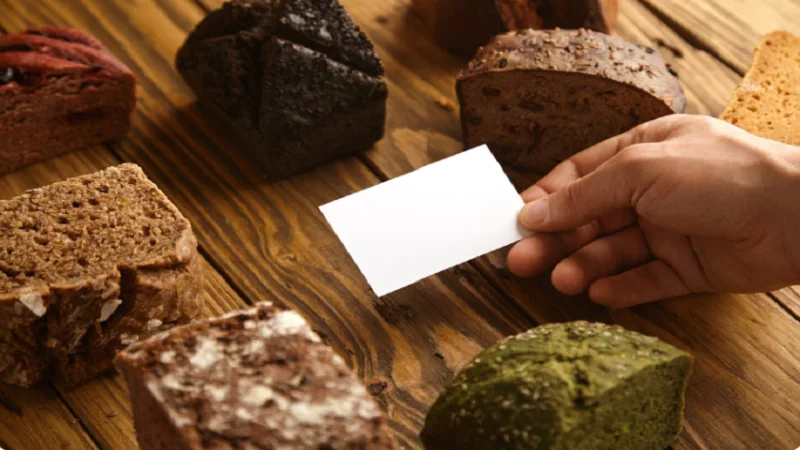In the world of food and dining, first impressions matter. Whether you’re running a small café, launching a home-baked goods business, or managing a gourmet food truck, how you present yourself can influence customer trust and loyalty. While social media and websites are essential for visibility, an often-overlooked but powerful tool for food entrepreneurs is the business card print.
This simple piece of cardstock can do more than just share contact details—it can create a memorable experience, showcase your brand’s personality, and even help spread the word about your culinary venture.
Why Business Cards Still Matter in the Food Industry
With smartphones and digital menus everywhere, some might assume printed business cards are outdated. However, research shows that physical marketing materials still play a significant role in brand recognition. A customer may scroll past your Instagram ad, but a tangible, beautifully designed business card print can sit in their wallet, fridge, or desk for months.
For food professionals, the tactile element is especially valuable. Just as diners judge food by its presentation, they also judge businesses by how they present themselves. A high-quality business card signals professionalism, creativity, and reliability.
Adding Flavor to Your Brand with Printed Business Cards
A restaurant or food brand’s story isn’t just told through menus—it’s also shared in every touchpoint, including your business cards.
- Design with Personality: A rustic bakery might use textured kraft paper, while a modern café could opt for sleek matte finishes. Let your brand’s vibe shine through.
- Incorporate Food Elements: Colors inspired by ingredients (coffee browns, avocado greens, berry reds) can connect your business visually to your menu.
- Include Imagery: Icons like spoons, plates, or even a subtle food photo can reinforce what your business offers.
- Highlight Specialties: Use one side of your business card print for contact details and the other for showcasing your signature dish or tagline.
Smart Ways Food Entrepreneurs Can Use Business Cards
1. Customer Loyalty Boosters
For example, “Buy 9 coffees, get the 10th free.” This transforms your card into both a marketing tool and a loyalty incentive.
2. Recipe or Discount Sharing
Why not include a mini recipe, cooking tip, or QR code linking to a discount coupon? Customers are more likely to keep and use your card if it offers value beyond contact info.
3. Networking at Food Events
Food festivals, farmers’ markets, and tasting events are prime spots for building connections. Handing out a card creates a professional, lasting impression, especially when buyers want to follow up later.
4. Partnerships and Collaborations
Suppliers, event organizers, and fellow chefs often seek long-term relationships. Sharing a polished business card print shows you take your business seriously.
The Role of Business Cards in Building Trust
In the food industry, trust is everything. Customers want to feel confident about where their food comes from and who is preparing it. Something as simple as a well-designed card with your name, logo, and contact details can foster that trust.
Consider a street vendor who gives out clean, attractive cards with their food truck’s social media handles and hours of operation. Compared to one who offers only a verbal mention, the former is more likely to gain repeat customers.
Trends in Food Business Cards
Like menus, business cards in the food world evolve with trends.
- Eco-Friendly Materials: Recycled paper or seed paper that customers can plant.
- Interactive Elements: QR codes that lead to online menus, delivery platforms, or Instagram profiles.
- Unique Shapes: Cards shaped like cupcakes, coffee cups, or utensils make your brand instantly memorable.
- Minimalist Style: Clean, modern layouts with bold typography work well for upscale restaurants.
These trends not only make a business card print visually appealing but also align with customer expectations for creativity and sustainability.
Tips for Designing an Effective Food Business Card
- Keep Information Clear: Business name, contact details, website, and hours should be easy to read.
- Avoid Clutter: Too much text or too many images can overwhelm.
- Use Professional Printing Services: A crisp, high-quality finish makes your brand look polished.
- Test Durability: Since cards are often handled in busy environments, sturdier cardstock can keep them looking fresh.
Final Thoughts
In an age dominated by digital marketing, food entrepreneurs might overlook the humble business card. Yet the business card print remains a powerful branding tool that creates personal connections and lasting impressions.
For chefs, bakers, food truck owners, and restaurateurs, it’s more than just paper—it’s a slice of your story in someone else’s hand. Whether used as a loyalty card, a networking tool, or a creative brand statement, business cards can help food entrepreneurs stand out in a competitive industry.
So next time you’re perfecting your recipes or redesigning your menu, don’t forget to update your business cards. That little rectangle of paper might be the key ingredient to your success. See more
